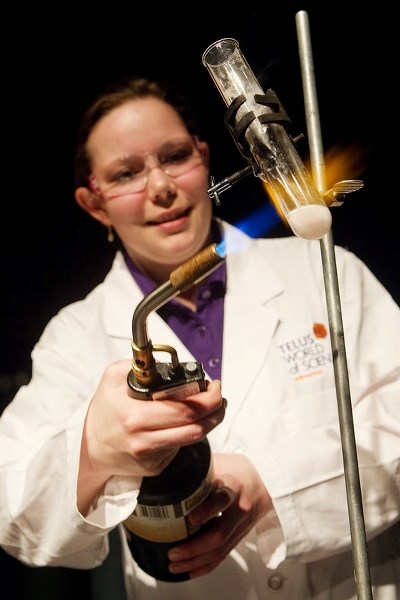Ever had liquid nitrogen ice cream? Spheres of orange juice? Steak?
These and other culinary wonders all have one thing in common: science. Starting this weekend, the Telus World of Science in Edmonton is hosting a month-long celebration of the science of food.
“Food is something we eat every day,” says Jennifer Bawden, science director at the Telus World of Science, and there’s great public interest in the science behind it. The media is full of reports on fad diets and the latest foods that will help/harm you, yet our actual understanding of nutrition is very limited.
Food wasn’t as complicated in the past because we lived more active, shorter lives, Bawden says. Now that we’re living longer, we’re seeing new effects that food has on the body.
This weekend’s event at the science centre focuses on nutrition, Bawden says, and will feature a variety of talks and activities on common food questions.
Should you be chugging electrolytes after you exercise, for example? “An electrolyte is essentially an ion in your body,” Bawden says, and is used in many reactions to regulate chemical and fluid levels. Although many sports drinks are loaded with them, research suggests that you don’t need to drink more of them unless you do about 90 minutes of intense exercise – plain water is enough for most folks.
And what’s this “gluten” thing in bread? Gluten is a protein that forms chains when you knead dough, Bawden says. You want it in bread, as the chains trap gases so the bread can rise, but not in pastry, as those chains are chewy. You also want to avoid it if you have celiac disease, which causes inflammation in the small intestine on contact with gluten.
The science centre will also explore the science behind cooking and candy later this month.
Cooks have been using science to prepare food for hundreds of years, says Peter Keith, a Paul Kane graduate and world champion chef in Edmonton, but have started to publicize it more in the last decade or so. The very act of grilling a steak is a chemical reaction, he notes, one that denatures proteins and changes the texture and taste of the beef.
He personally favours the Maillard reaction – a reaction that occurs when you sear meat involving sugar, amino acids and heat. “The surface of that protein is actually going through a chemical reaction,” he explains, one that turns the meat brown and makes it taste and smell good. (It also happens when you make toast.)
Modern technology lets chefs cook steaks to within a hundredth of a degree Celsius, Keith says, so they can give their patrons food that is precisely medium rare.
It also lets them make instant ice cream (using liquid nitrogen) and serve food in weird and wonderful ways. French chemist HervĂ© This has popularized the use of hydrocolloids (gels), for example, to make tomato juice noodles or orange juice foam. “You can totally change people’s perceptions of flavours.”
Visitors will be able to make fruit juice pearls and magic coloured milk at the World of Science later this month, Bawden says.
Activities are free with admission, and run each weekend until the end of April. For details, visit telusworldofscienceedmonton.com.




